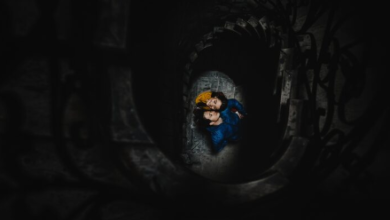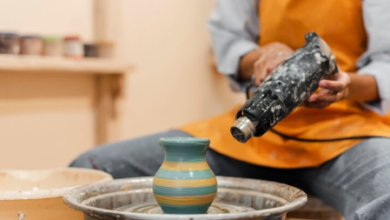The Complete Guide to Acryldach Systems

The term “Acryldach” represents a sophisticated approach to roof preservation and waterproofing, centered around the use of elastomeric acrylic resins that form a seamless, monolithic membrane over an existing roof structure. Unlike traditional roofing methods that involve the installation of discrete, overlapping materials like shingles or tiles, an Acryldach system is a liquid-applied solution that cures to create a continuous, joint-free protective layer. This seamless nature is one of its most significant advantages, as it eliminates the weak points typically found at seams and overlaps, which are common failure points for leaks in conventional roofing. The primary component, the acrylic coating, is a water-based emulsion fortified with polymers, pigments, and additives that grant it remarkable flexibility, allowing it to expand and contract with the roof substrate through daily and seasonal temperature fluctuations without cracking, blistering, or becoming brittle. This inherent elasticity is paramount for the long-term integrity of the roof, as it accommodates the natural movement of the building, ensuring a durable and long-lasting protective barrier against the elements.
The benefits of implementing an Acryldach system are multifaceted, offering both immediate functional improvements and long-term economic advantages for property owners. Foremost among these is the superior waterproofing and weatherproofing performance; the seamless acrylic membrane is entirely impervious to water, effectively preventing leaks and protecting the underlying structure from water damage, rot, and mold growth. Furthermore, most Acryldach coatings are formulated to be highly reflective, featuring light-colored or white finishes that possess a high Solar Reflectance Index (SRI). This reflectivity plays a crucial role in reducing the Urban Heat Island effect and, more directly for the building owner, significantly lowering cooling costs by reflecting a substantial portion of the sun’s radiant heat away from the building, thereby reducing the air conditioning load during warm months. From a maintenance and longevity perspective, these systems are designed to be exceptionally durable, with a typical service life of 10 to 20 years or more when properly installed and maintained. Maintenance is also simplified, as the smooth, seamless surface is easy to inspect and clean, and any minor damage can often be repaired with a fresh application of the coating, avoiding the need for a full roof replacement.
The application of an Acryldach system is a meticulous process that requires professional expertise to ensure optimal performance and longevity, and it typically unfolds in several critical stages. The process begins with a thorough and comprehensive preparation of the existing roof substrate, which is arguably the most important step for a successful installation. This preparation involves a detailed inspection, followed by high-pressure cleaning to remove all dirt, debris, biological growth, and any loose or flaking material to create a perfectly clean and sound surface. All existing cracks, gaps, and details around penetrations like vents and pipes must be meticulously sealed with specialized acrylic mastics and reinforced with waterproofing tapes or fabrics to ensure a continuous waterproof barrier. Once the substrate is fully prepared, the liquid acrylic coating is applied using rollers, brushes, or airless spray equipment, with the spray method being preferred for large, flat areas as it ensures a uniform and consistent thickness. Most systems require the application of multiple coats, with a reinforcing fabric often embedded within the layers at critical stress points to provide additional tensile strength and durability before the membrane is left to cure into a resilient, elastic skin.
To fully appreciate the value proposition of an Acryldach, it is essential to understand how it compares to other prevalent flat and low-slope roofing solutions. When compared to bituminous membranes (such as APP or SBS modified bitumen), Acryldach systems offer a significant advantage in terms of ease of application, as they are cold-applied without the need for open flames or hot kettles, which enhances jobsite safety. They also provide superior UV resistance and reflectivity, whereas bituminous membranes absorb heat and degrade over time under solar radiation. In contrast to PVC or TPO single-ply membranes, which are installed as pre-fabricated sheets, the liquid-applied Acryldach creates a seamless finish that eliminates the need for heat-welded seams, which can be potential failure points. However, it is important to note that Acryldach systems are typically used as a protective coating over a sound existing roof or a suitable substrate, making them an excellent restorative option, whereas single-ply membranes are often used in new construction. The choice between these systems ultimately depends on specific factors such as the condition of the existing roof, the budget, the building’s structural requirements, and the long-term performance expectations, with Acryldach standing out as a premier solution for refurbishment and long-term, reflective waterproofing.
Conclusion
An Acryldach system represents a modern, highly effective, and economically sensible solution for the waterproofing and preservation of a wide range of roof types. Its core strengths lie in the creation of a seamless, elastomeric membrane that provides unparalleled protection against water ingress while simultaneously offering significant energy-saving benefits through its reflective properties. The durability, ease of maintenance, and ability to breathe new life into aging roof structures make it an investment that pays dividends in both property protection and operational cost reduction. While the success of the system is heavily reliant on a professional and meticulous application process, the resulting performance and longevity are exceptional. For anyone considering roof repair, refurbishment, or seeking a high-performance coating to extend the service life of their roof, the Acryldach technology stands as a compelling, versatile, and proven choice in the contemporary roofing market.
Frequently Asked Questions (FAQ)
Q1: What types of roofs are suitable for an Acryldach coating?
A1: Acryldach systems are highly versatile and can be applied over a variety of substrates, including concrete, cement screed, bituminous membranes, old PVC roofs, and suitable wood-based panels. The key requirement is that the existing roof structure is sound, stable, and properly prepared.
Q2: How long does an Acryldach system typically last?
A2: The service life of a professionally applied Acryldach system is typically between 10 and 20 years. Its longevity is influenced by the quality of the application, the local climate conditions, the roof’s exposure to weather, and the level of maintenance it receives over time.
Q3: Can an Acryldach be applied on a roof that is currently leaking?
A3: No, the roof must be completely dry and free of active leaks before application. The preparatory phase is critical and involves identifying and permanently repairing all sources of leaks. Applying the coating over moisture or an active leak will trap water, leading to failure of the system.
Q4: Is an Acryldach coating environmentally friendly?
A4: Yes, most modern Acryldach coatings are water-based, containing low levels of VOCs (Volatile Organic Compounds), which makes them more environmentally friendly than many solvent-based alternatives. Their reflective properties also contribute to energy efficiency, reducing the carbon footprint of the building.
Q5: How does the cost of an Acryldach compare to a complete roof replacement?
A5: An Acryldach system is generally a more cost-effective solution than a full roof tear-off and replacement. It eliminates disposal costs for the old roof and reduces labor intensity. It is considered a premier roofing refurbishment option that can extend the life of an existing roof for a fraction of the cost of a new one.



